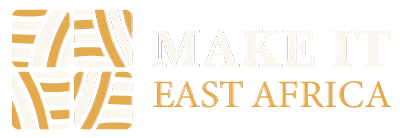Growth Projections and Insights for the Savvy Investor
The textile industry, a cornerstone of global manufacturing, is poised for significant growth in the coming years. For investors looking to capitalize on this promising sector, understanding the key trends and growth projections is crucial. This article delves into the future outlook of the textile industry, highlighting actionable insights and comprehensive data to inform your investment decisions.
Current Landscape and Market Dynamics
As of 2024, the textile industry is undergoing a transformative phase driven by technological advancements, sustainability initiatives, and shifting consumer preferences. Key segments such as apparel, home textiles, technical textiles, and industrial textiles are witnessing robust demand fueled by urbanization, rising disposable incomes, and the increasing adoption of functional textiles in various applications.
Growth Drivers Shaping the Future
1. Technological Advancements
Innovations in textile manufacturing technologies, including automation, digital printing, and smart textiles, are enhancing efficiency and product capabilities.
2. Sustainability Initiatives
There is a growing emphasis on sustainable practices across the industry, with eco-friendly fibers, recycling technologies, and reduced environmental impact becoming paramount.
3. Changing Consumer Behavior
Consumers are increasingly prioritizing quality, durability, and sustainability in their textile purchases, influencing product development and market strategies.
4. Emerging Markets
Rapid industrialization in regions like Asia-Pacific, Latin America, and Africa is expanding the consumer base and driving demand for textiles across various sectors.
Market Growth Projections
Looking ahead, analysts forecast robust growth for the global textile industry with a promising Compound Annual Growth Rate (CAGR) over the next 5-10 years. Here’s a breakdown by key segments:
Apparel Textiles
The largest segment, driven by fashion trends and growing middle-class populations in emerging markets, is expected to grow at a CAGR of approximately 4-5%.
Home Textiles
Increasing investments in home décor, along with rising consumer spending on home improvement, are projected to fuel a CAGR of 5-6%.
Technical Textiles
With applications in automotive, construction, healthcare, and sports industries, this segment anticipates a CAGR of 6-7% owing to technological advancements and expanding end-user industries.
Industrial Textiles
Used in sectors such as agriculture, packaging, and geotextiles, industrial textiles are forecasted to grow at a CAGR of 5-6%, driven by infrastructure development and industrialization.
Actionable Insights for Investors
1. Diversification
Consider diversifying investments across different textile segments to mitigate risks and capitalize on sector-specific growth opportunities.
2. Technological Integration
Look for companies investing in advanced manufacturing technologies and smart textiles to stay ahead in innovation-driven markets.
3. Sustainability Focus
Companies committed to sustainable practices and eco-friendly products are likely to attract conscientious consumers and investors alike.
4. Geographical Expansion
Explore opportunities in emerging markets where rapid urbanization and industrial growth are driving demand for textiles.
5. Supply Chain Resilience
Evaluate companies with resilient and efficient supply chains to navigate global disruptions and maintain operational continuity.
In conclusion, the textile industry presents lucrative opportunities for investors seeking long-term growth and sustainability. With favorable market dynamics, technological advancements, and evolving consumer preferences, the sector is poised for significant expansion over the next decade. By leveraging these insights and understanding market forecasts, investors can make informed decisions to capitalize on the burgeoning prospects within the textile industry.
Invest wisely, stay informed, and position yourself to benefit from the dynamic growth trajectory of the global textile market.

